19 Delicious Foods Most People Have Never Tasted

There are foods that everyone knows—and then there are the hidden gems. These dishes are often tucked away in lesser-known regions, obscure cookbooks, or foreign cultures most people haven’t explored yet. They might sound unfamiliar at first, but once you try them? Game changers. Here are 19 delicious foods you probably haven’t tasted—but definitely should.
1. Khachapuri (Georgia)

In the heart of Georgia, a dish emerges that’s both comfort and tradition wrapped in one. Khachapuri, a delightful cheese-filled bread, captures the essence of Georgian hospitality. Imagine a golden, crispy crust cradling a gooey mixture of tangy cheese and a runny egg yolk. Each bite is an invitation to enjoy the simple, yet profound flavors of this culinary gem. Often served with a side of vibrant Georgian salads, it’s a meal that connects generations. A staple at family gatherings and celebrations, Khachapuri is more than just food—it’s an experience.
2. Mote con Huesillo (Chile)
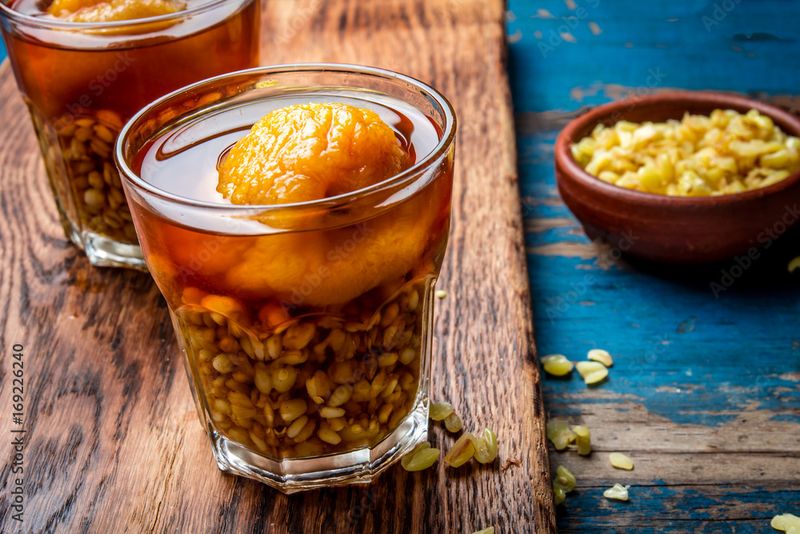
On the vibrant streets of Chile, a unique drink-dessert unveils itself to the curious traveler. Mote con huesillo, a sweet concoction of dried peaches and husked wheat, offers a refreshing escape from the ordinary. The combination of chewy wheat and syrupy peaches creates an intriguing texture that dances on the palate. Usually enjoyed during summer festivals, this traditional beverage is a beloved staple that refreshes and delights. Its origins trace back to indigenous culinary practices, making it not only a treat but also a sip of history. It’s a must-try for adventurers seeking new flavors.
3. Larb (Laos/Thailand)
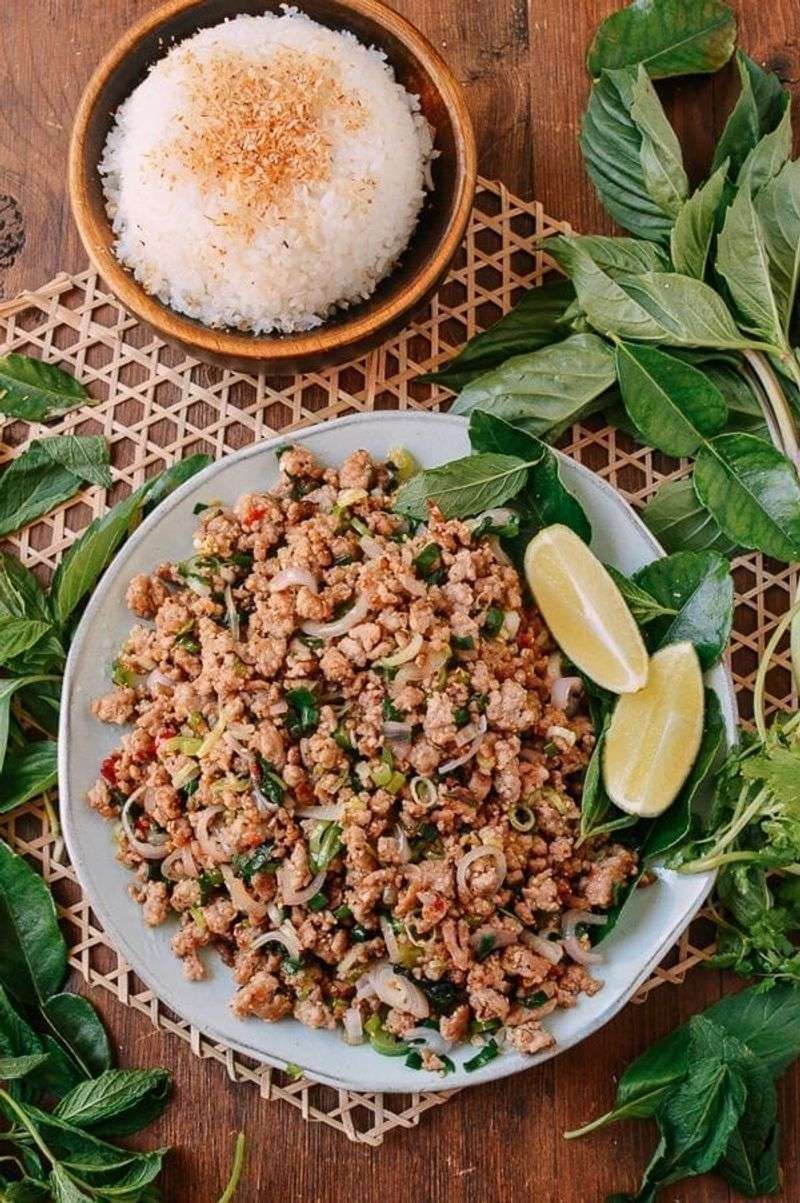
In the bustling kitchens of Laos and Thailand, larb emerges as a flavorful star. This minced meat salad, adorned with fresh herbs and a hint of lime, is a whirlwind of textures and tastes. Each mouthful offers a spicy and tangy symphony, where roasted rice adds a delightful crunch. Known as the unofficial national dish of Laos, larb is an integral part of social gatherings and feasts. The dish’s charm lies in its balance of flavors and its ability to bring people together, making every meal a celebration of life and community.
4. Biltong (South Africa)

In the vast landscapes of South Africa, biltong stands as a testament to time-honored traditions. This air-dried, spiced meat offers a tender, flavorful bite that’s distinctly different from American jerky. Imagine savoring a piece that’s not only rich in spices but also tells a story of heritage. Biltong is more than a snack; it’s a connection to the past, enjoyed by generations. Whether savored on a hike or shared around a campfire, its robust taste and chewy texture make it an adventure for the palate. A taste of South Africa’s wild spirit.
5. Pão de Queijo (Brazil)

In the lively streets of Brazil, pão de queijo calls out to food enthusiasts with its irresistible aroma. These small, golden cheese breads, crunchy on the outside and chewy inside, offer a taste of Brazilian comfort. Made from tapioca flour, they’re naturally gluten-free, appealing to a wide range of dietary needs. Often enjoyed with a cup of coffee, pão de queijo is a breakfast staple that brings warmth to any morning. Its simple ingredients come together in a delightful harmony that celebrates the essence of Brazilian culinary creativity.
6. Nattō (Japan)

In Japan, nattō divides opinions with its bold, distinct flavor and sticky texture. Fermented soybeans might sound unusual, but for many, they’re a cherished part of daily breakfast. Their umami-packed taste and unique aroma make them an acquired taste, loved or avoided. Mixed with a bit of soy sauce or mustard, nattō provides a nutritious start to the day, rich in protein and probiotics. In Japanese households, it’s a symbol of health and simplicity, offering a glimpse into the diverse world of Japanese cuisine.
7. Ćevapi (Balkans)
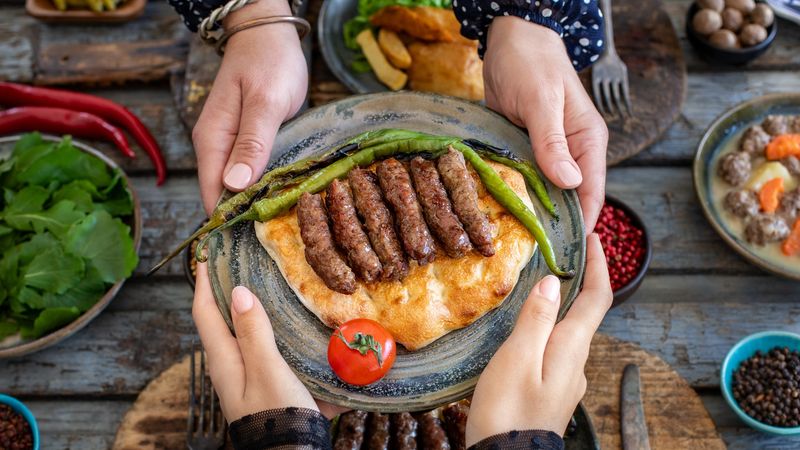
In the heart of the Balkans, ćevapi reigns supreme, capturing the essence of Balkan cuisine. These small, grilled sausages, often served with flatbread, are a flavorful delight. Made from spiced ground meat, they offer a juicy bite that’s complemented by a creamy red pepper sauce. Each piece tells a story of tradition and regional pride, perfect for sharing with friends over a hearty meal. Whether enjoyed in a bustling market or a quiet family gathering, ćevapi is a celebration of the Balkans’ rich culinary heritage.
8. Khao Soi (Northern Thailand)
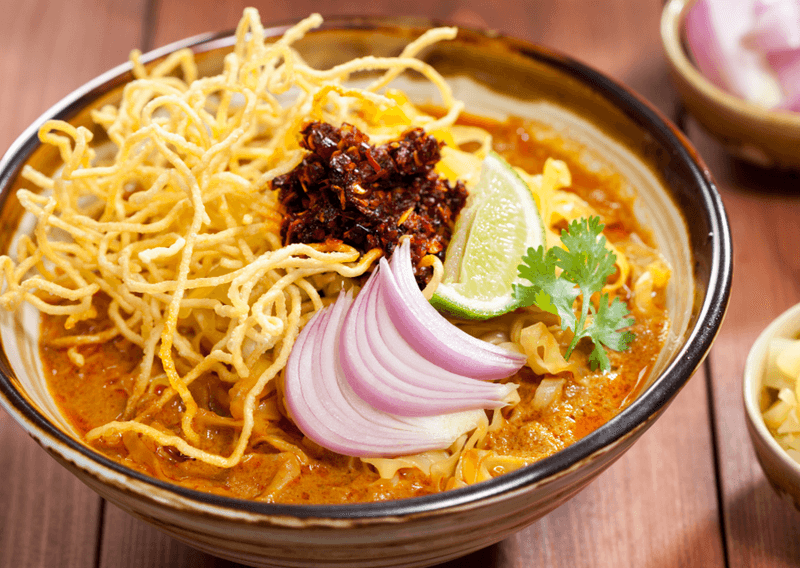
In Northern Thailand, khao soi offers a spicy escape into the world of Thai flavors. This coconut curry noodle soup, topped with crispy fried noodles, is a hidden gem even among Thai dishes. Its rich, creamy broth is infused with spices that tantalize the senses, making every spoonful a delight. Khao soi is more than a dish; it’s a journey into the diverse flavors of Thai cuisine, often sought after by those seeking authenticity. Its complex taste and comforting warmth make it a beloved choice for both locals and travelers.
9. Romanesco (Italy)

In Italy, romanesco catches the eye with its vibrant green hue and intricate spiral patterns. Resembling a cross between broccoli and cauliflower, it boasts a nutty, delicate flavor. This vegetable isn’t just a feast for the palate but also for the eyes, often used in gourmet dishes to impress diners. Romanesco’s unique appearance makes it a favorite among chefs and home cooks alike, offering endless possibilities in the kitchen. Whether roasted, steamed, or sautéed, it brings an artistic touch to any meal, making it a staple in Italian markets.
10. Pastel de Nata (Portugal)

In the quaint cafés of Portugal, pastel de nata tempts with its flaky crust and creamy custard filling. These custard tarts, with their caramelized tops, offer a sweet escape into Portuguese tradition. Often enjoyed with a cup of strong coffee, they’re a beloved snack that captures the heart of Portuguese pastry. The balance of textures and flavors makes each bite a delightful experience, reminiscent of the warmth and charm of Portugal. Pastel de nata stands as a testament to the country’s rich culinary history, a must-try for any visitor.
11. Tlayudas (Oaxaca, Mexico)

In Oaxaca, Mexico, tlayudas emerge as a culinary treasure, offering a taste of Mexican creativity. These giant, crispy tortillas are laden with beans, meat, cheese, and avocado, creating a symphony of flavors. Often dubbed the ‘Mexican pizza,’ tlayudas are a hearty meal that satisfies the soul. The dish’s origins are deeply rooted in Oaxacan culture, often enjoyed during festivals and family gatherings. Each bite tells a story of tradition and innovation, a celebration of the region’s vibrant culinary scene. Tlayudas are more than food—they’re a cultural experience.
12. Chakalaka (South Africa)
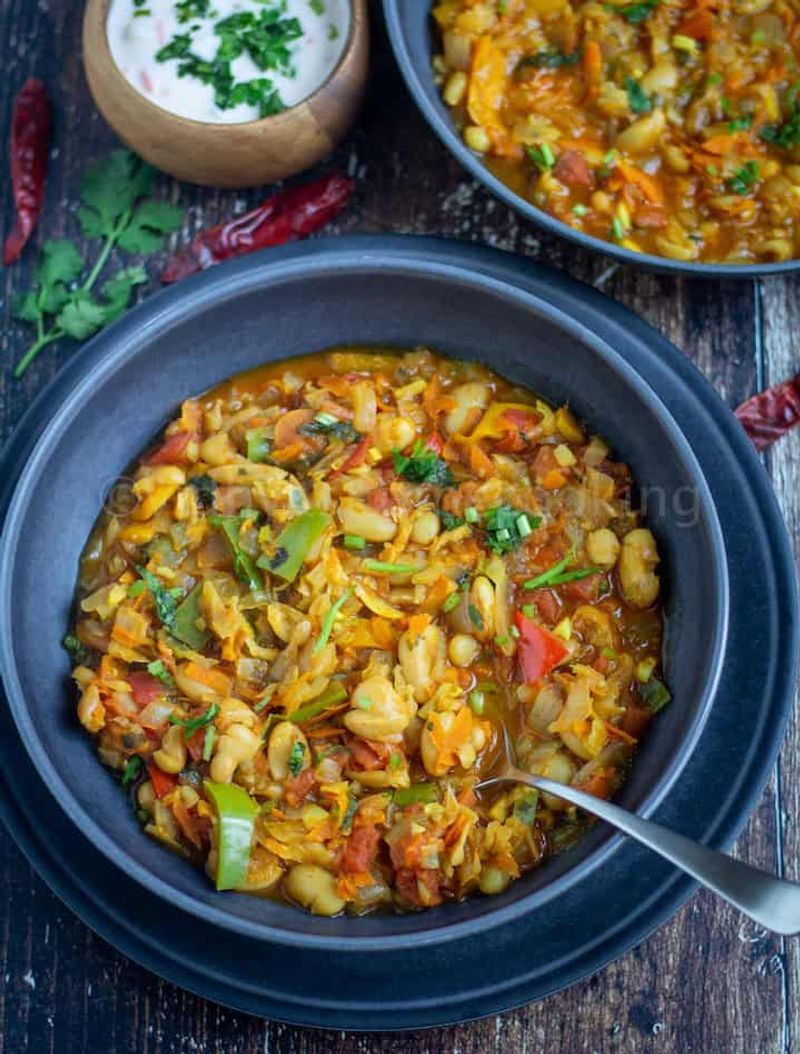
In South Africa, chakalaka adds a fiery kick to any meal. This spicy vegetable relish, often paired with meats and pap, is a staple at braais and gatherings. Rich in curry flavor and a hint of heat, chakalaka transforms ordinary dishes into extraordinary experiences. Its roots trace back to the townships, where creativity and resilience gave birth to this beloved condiment. Chakalaka not only complements meals but also embodies the spirit of South African cuisine, a blend of cultures and flavors that unite in every bite.
13. Gjetost (Norway)

In Norway, gjetost challenges the conventional with its sweet, caramelized flavor. This brown cheese, made from goat’s milk, offers a taste experience that’s more fudge than cheddar. Its rich, creamy texture and unique flavor profile make it a cheese lover’s delight. Often enjoyed with crispbread, gjetost is a staple in Norwegian breakfasts, offering a touch of sweetness to start the day. The cheese’s origins lie in the country’s rural traditions, a testament to Norwegian ingenuity and love for dairy. Gjetost is more than cheese; it’s a slice of Norway’s culinary identity.
14. Shakshuka (North Africa/Middle East)

In the kitchens of North Africa and the Middle East, shakshuka delights with its vibrant colors and robust flavors. Poached eggs simmer in a rich tomato and pepper sauce, creating a breakfast dish that transcends borders. Each spoonful is a harmonious blend of spices and textures, offering a comforting start to any day. Shakshuka’s origins are a testament to the region’s culinary creativity, a dish that adapts to local tastes while maintaining its core essence. It’s more than a meal; it’s a shared experience, enjoyed across continents.
15. Plov (Uzbekistan)
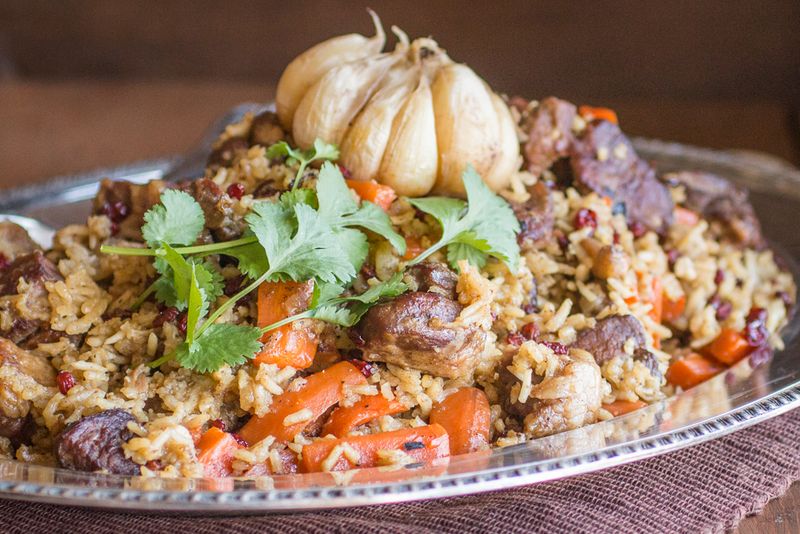
In Uzbekistan, plov is the heart and soul of the table, a dish that embodies warmth and community. This spiced rice dish, enriched with lamb, carrots, and onions, offers a fragrant and hearty meal. Each spoonful carries the essence of Central Asian flavors, a blend of spices that resonate with history. Plov is more than sustenance; it’s a symbol of hospitality, often served at celebrations and gatherings. The dish’s origins are steeped in tradition, a reminder of the region’s rich culinary heritage and the bonds of family and friendship.
16. Cassava Cake (Philippines)

In the Philippines, cassava cake offers a slice of home, a dessert that’s both chewy and sweet. Made from grated cassava, coconut milk, and condensed milk, it presents a delightful medley of textures and flavors. The cake’s sticky, dense nature makes it a cherished treat at family gatherings and celebrations. Its golden crust and creamy interior invite indulgence, a testament to Filipino culinary creativity. Cassava cake’s roots are deeply embedded in the country’s cultural fabric, a sweet reminder of home for many. It’s a dessert that bridges generations, loved by all.
17. Banitsa (Bulgaria)

In Bulgaria, banitsa is a celebration wrapped in flaky pastry. This savory delight, layered with eggs and cheese, offers a taste of Bulgarian tradition and hospitality. Often enjoyed for breakfast or during festive occasions, banitsa’s buttery and tangy profile enchants the palate. Each layer unfolds a story of culinary artistry, a blend of simple ingredients transformed into a masterpiece. Banitsa’s presence at the table marks moments of joy and togetherness, a symbol of Bulgarian cultural richness. Whether shared among family or presented to guests, it’s a dish that speaks of home.
18. Féroce d’Avocat (Martinique)
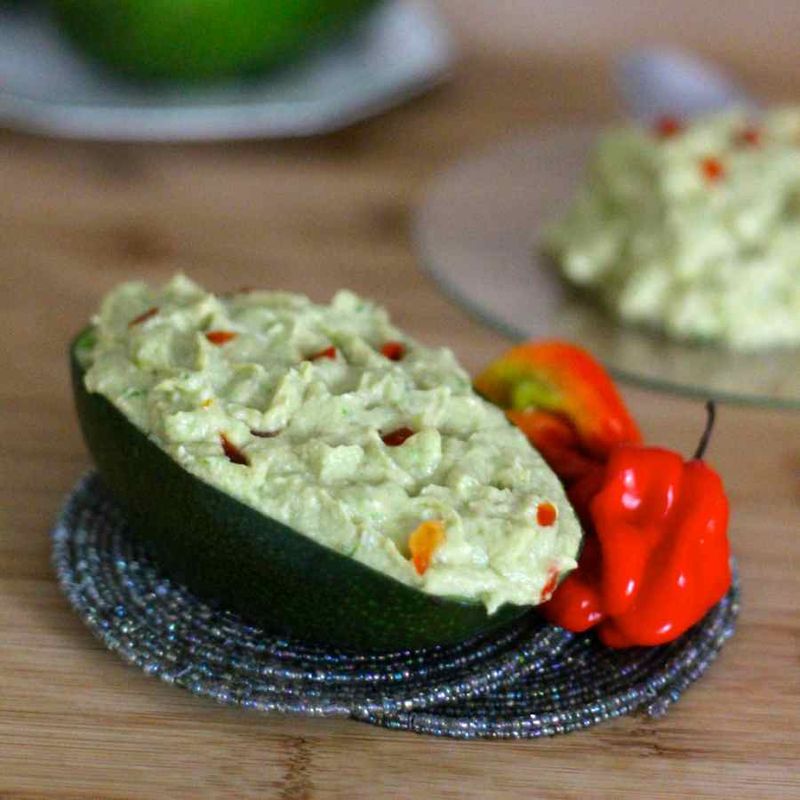
In Martinique, féroce d’avocat surprises with its bold, creamy character. This blend of avocado, cassava, and salted cod offers a taste of the Caribbean’s vibrant flavors. Often compared to guacamole, its spicy kick sets it apart, creating an exciting culinary adventure. Each spoonful is a dance of textures and tastes, embodying the island’s spirit of creativity and boldness. Féroce d’avocat is more than a dish; it’s a celebration of Martinique’s rich cultural heritage, enjoyed by locals and visitors alike. It’s a testament to the island’s ability to harmonize diverse influences into one delicious experience.
19. Chawanmushi (Japan)
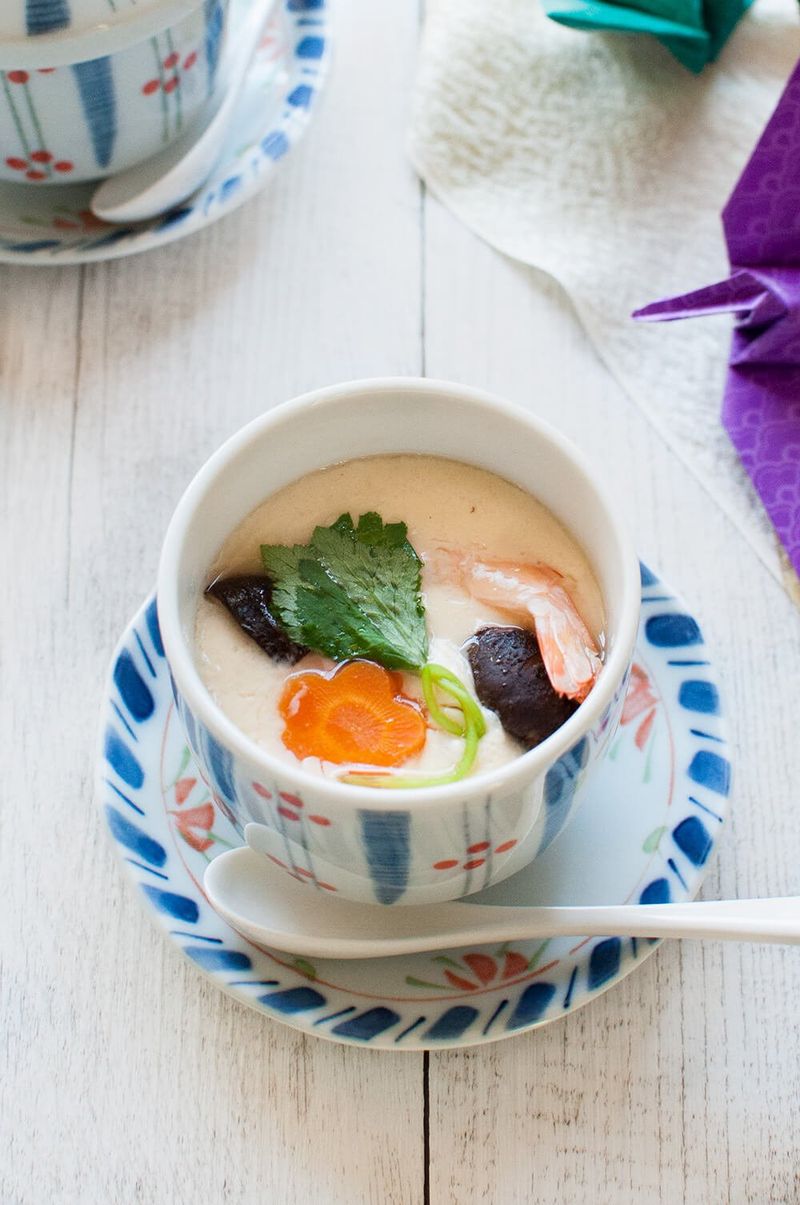
In Japan, chawanmushi captivates with its silky, delicate texture. This savory egg custard, infused with dashi broth, mushrooms, and shrimp, offers a harmonious blend of flavors. Each spoonful melts in the mouth, a testament to Japanese culinary precision. Often served as an appetizer, chawanmushi introduces diners to the subtleties of Japanese cuisine. Its origins lie in the tea ceremonies, where simplicity and elegance reign supreme. Chawanmushi is more than a dish; it’s an expression of Japan’s dedication to harmony and balance, a culinary experience that soothes and delights.
